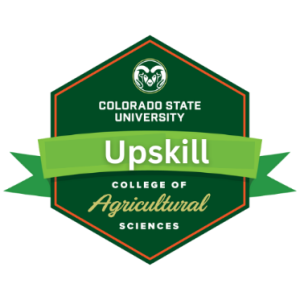7.5 – Preventing Seed Transmission of Pathogens
Managing plant diseases, including those caused by seedborne pathogens, is generally more effective when preventative or preharvest control measures are taken. Once a disease is established and the seed has been harvested, management becomes much more challenging and often unsuccessful.
Preharvest Controls
Preharvest controls of seedborne pathogens fall into three main categories. Click on each below to learn more about these three categories.
In addition to field inspection, seed testing for pathogen presence is used as part of phytosanitary regulations. Different testing methods are employed depending on the market, regulations, and National Seed Health System (NSHS) protocols.
Post-Harvest Seedborne Pathogen Controls
Seed Moisture Management
Moisture content is one of the most important factors for maintaining seed quality and longevity. Managing moisture prevents mold and pest development in storage. High moisture content, combined with temperature and humidity, leads to seed deterioration. Mature seeds are relatively dry but hygroscopic, meaning they will absorb or lose moisture to reach equilibrium with their environment. For best quality and storage life, seeds should be dried as soon as possible after harvest.
Seed drying can be achieved naturally (using sun and wind) or mechanically (using a bin or dryer with a fan and possibly a heater). The goal of seed storage is to keep temperature and humidity stable. Although proper storage can’t improve seed viability, incorrect storage can reduce it, often due to mold growth.
Common storage fungi include Aspergillus, Penicillium, and some Fusarium species. Some fungi produce mycotoxins that harm animals and humans who consume infected grain. Although seeds can be impacted by storage molds, they are generally not a mycotoxin risk.
The Importance of Seed Conditioning
Seeds rarely come out of harvesting completely clean or in optimal condition. For fruits and vegetables, seeds must be extracted from the fruit before they can be dried and cleaned. The objectives of seed conditioning are to:
- Remove trash and soil clods
- Eliminate poor-quality seed
- Separate and remove diseased seeds or pathogen bodies
- Minimize seed loss
- Maximize processing capacity
- Minimize labor costs
For more on seed conditioning theory, processes, and equipment, see Lesson 1. Particle separation during conditioning is based on physical properties:
- Seed size, shape, and dimensions (using different screen sizes)
- Density differences
- Aerodynamics (using air and gravity)
- Color differences
Pathogen structures mixed with seeds can cause internal infections, leading to seeds with altered densities, discoloration, deformities, or reduced size.
Soilborne vs. Seedborne Pathogens in Seed Conditioning: Does It Matter?
Seed conditioners are expected to remove contaminants, including soil and diseased seeds. Flip each card to learn more about soilborne and seedborne pathogens:
In summary, soilborne pathogens are equally as risky as seedborne pathogens.
The risk analysis process discussed for seedborne pathogens is also used for soilborne pathogens. Both seedborne and soilborne pathogens can have a long lifespan due to their ability to persist in the soil or in seed and over extended periods. The length of time these pathogens remain viable is dependent on many factors including the environment and the pathogen/host interaction. In general:
- Soilborne pathogens generally last longer than seedborne pathogens.
- Soilborne pathogens, such as Fusarium oxysporum and Rhizoctonia solani, can survive in the soil for many years, often without their host plants. They persist by forming resilient structures like spores or sclerotia, which can withstand adverse conditions.
- Seedborne pathogens, on the other hand, are typically limited by the lifespan of the seeds they infect.
- While some seedborne pathogens can survive for extended periods, they generally do not last as long as soilborne pathogens.
Review
Work through these interactive questions to review the important concepts discussed.

